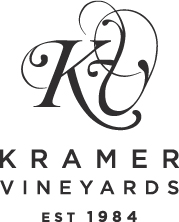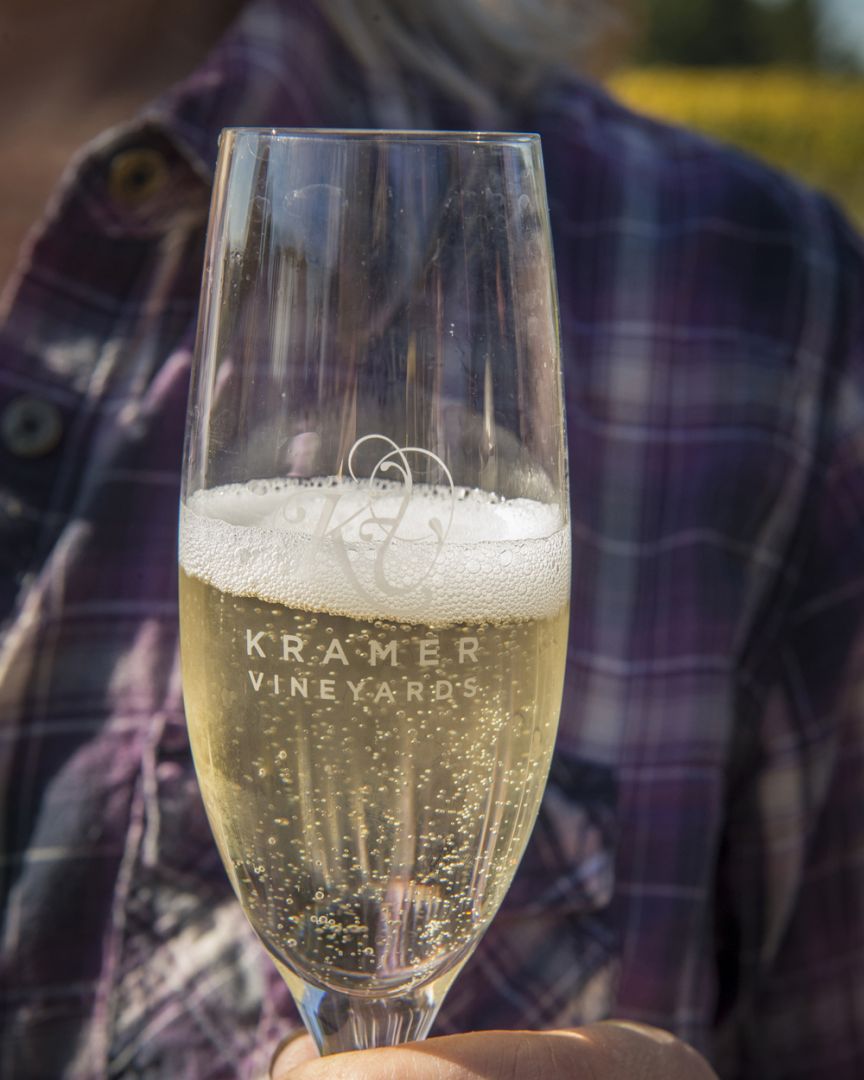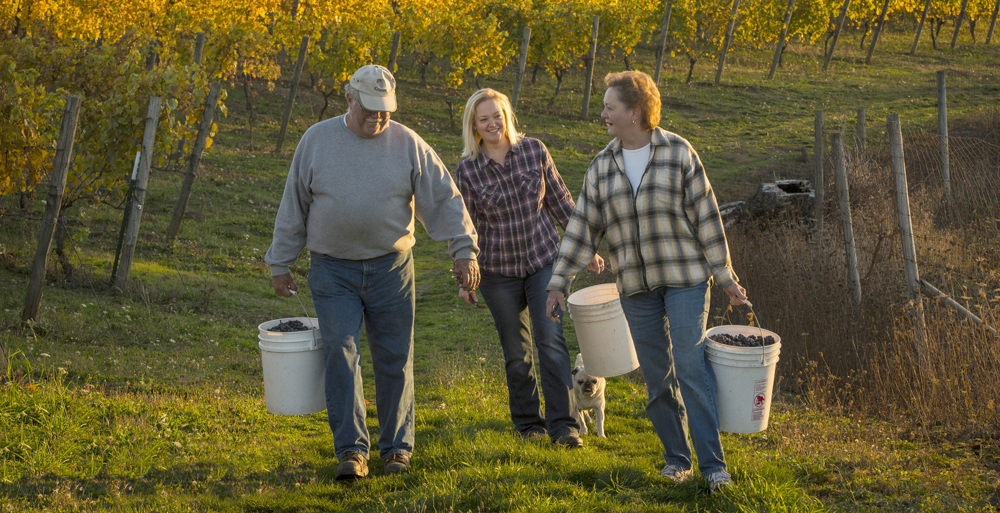Betting on Bubbles
Kramer Vineyards sparkles with alternative methods

Trudy Kramer never wanted to make sparkling wines. And for good reason.
“Sparkling wine is something that I never thought I wanted to get into in the first place,” she said. “It’s probably the hardest wine to make in the world.”
Nonetheless, Kramer Vineyards decided to give sparkling wines a try in 2002 when the 2001 Muller-Thurgau crop was so large. A friend made a few lots of carbonated for them and in 2004, the equipment was purchased so they could do their own. To listen to her, it would appear Trudy has no fondness for bubbles, but the success of the Celebrate Muller-Thurgau turned her around. It’s a grape…..expect.” Nobody else in Oregon was making a carbonated Muller-Thurgau so Kramer created a unique product.

Then in 2008, daughter Kim, came on board. She wanted to do Methode Champenoise. Trudy says, “I didn’t want to do it, but I delegated the entire project to Kim who worked closely with Keith. It’s a very difficult process and it has been a real learning curve.”
Kramer made its first batch of Methode Traditionelle (what we are currently required to call champagne method) in 2009. And these days both sparklings are taking off. While beer sales have been lackluster, sparkling wine sales are growing. According to the California Wine Institute, millennials are turning to Moscato and Prosecco in large numbers. In fact, the institute reports an 8 percent increase in sparkling wine shipments since last year. Prosecco sales, for example, have grown 30 percent in the last several years. And sparkling wines are not just for celebrations anymore; they are finding favor on dinner tables as well.
A different way to sparkle
It’s important here to draw a line between “carbonated” and sparkling wines. Both contain carbon dioxide, but in traditional sparkling, the fine bubbles come from a second yeast fermentation in each bottle, is extremely involved with lots of hand labor, a long processing time, variable wine loss, and a lot of expense. Trudy’s hesitance to get into sparkling wine stemmed from the traditional method: fermenting in the bottle, riddling, disgorging (freezing the necks to get the yeast out) and then introducing a dosage of either sugar or alcohol to finish off the wine. There is ample opportunity for error. “There are specific parameters that we have to meet, and if you miss them, then the whole batch may not work,” Trudy said. Their process uses an encapsulated yeast product that is measured and added to every bottle which cuts down considerably on the per bottle failure rate. The wine is stored for at least a year. To finish, riddling becomes a thing of the past. When disgorging (preparing to release the wine for sale) occurs, the bottle is chilled overnight in a freezer and is turned upside down and in 30 seconds the encapsulated yeasts are in the neck. The neck goes into a dry ice bath to freeze and when it warms up in a few minutes, the yeast plug shoots out. The dosage is added (if the winemaker agrees) and the bottle is topped up, The cork is inserted and the wire firmly attached. This is all done by hand. The next day the bottles are checked to make sure there are no yeast balls left. Then they can be capsuled and labeled ready for sale. Often, though, a few weeks in the bottle is beneficial allowing the flavors to meld and the cork to seat.
The carbonation process involves forcing carbon dioxide gas through a burr stone which cuts up the bubbles into bubbles smaller than soda. It takes only 5 days and then the wine is bottled using a special pressure filler. The bottle is corked and the wire applied. After warming up overnight, the bottle can be capsuled and labeled ready for sale. Keith has been able to fine-tune this process so much that the small bubbles lead even winemakers to suspect it is the traditional method or charmat and not carbonated.
In light of her newfound “quick and clean sparkle” method, as well as the spike in consumer interest, she is clearly no longer soured on bubbles. In fact, her method has led to other wineries asking for help in making sparkling wines.
“It’s an advantage to us because not many people are doing it,” she said.
Maybe the lesson here is to listen to your daughter? Or maybe the value lies with the tastes of millennials. Either way, sparkling wine has definitely worked out for Kramer.
In the years before Neil Zawicki landed in the Willamette Valley, he spent his time as a reporter in Alaska, and a sailor with an address in a California marina. In his spare time, he’s a student of history, a painter and a guitar player.












